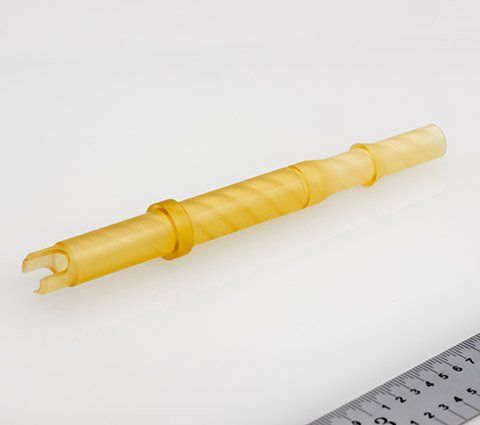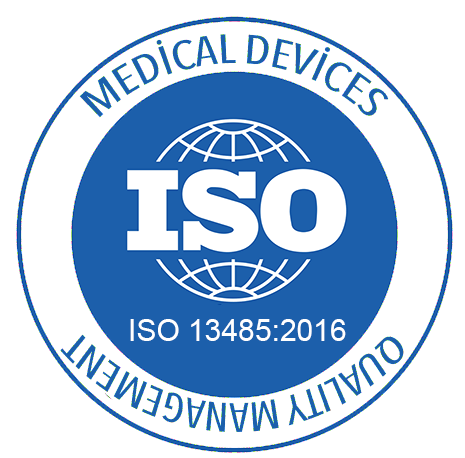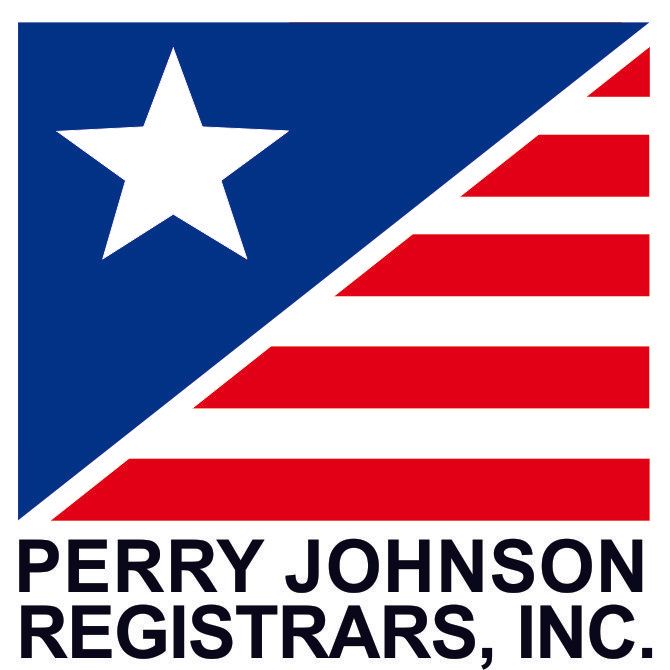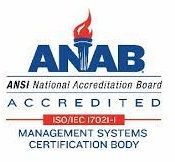CNC (Including Swiss Screw) Machining vs. Injection Molding, Which is the Right Choice?
Since I just got back from the BioMedevice Show in San Jose, I thought a post is warranted since I spoke to a lot of injection molding companies while I was there.

Where do I even start....
When talking with some of my customers that we machine parts for, the path is always the same...R & D components (maybe 5), then several iterations (maybe up to 5; which may/may not require prototypes), then small production run (100-500), then larger production runs (500-5000/yr) and then increasing as the product continues its life cycle and gains familiarity in the market then then at some point, the conversation comes up about switching to injection molding instead of continuing machining them (insert audible record player needle scratch!).
When moving from design to creating your parts, you must decide how to make the parts. In the best-case scenario, you had already considered this during the design process and your design is already optimized for one of the processes. Keep in mind, during the development life cycle; the right choice MIGHT change. Two common methods I want to talk about are CNC Machining (Including Swiss Screw) and injection molding. Both have advantages and disadvantages when choosing between them.
Before I get started, let me preface this blog with CrossWind Machining is a CNC Swiss Screw Machine shop, WE DO NOT and HAVE NOT
done injection molding but I/we do understand the nuances of both processes pretty well. This post is NOT about advocating for one or the other process, only you can determine which is right for you. But rather laying out the nuances of each that will help you make your decision to go with either (or both!) processes.
First of all, if you've gotten your production to the quantity levels to even consider injection molding, bravo to you! However, just because that's what the industry considers the standard progression in manufacturing, it isn't always the answer ... just like in Indiana Jones when the knight protecting the Holy Grail is making them choose a “cup” to drink from - a word of caution.... Choose Wisely!
Now let’s get started and look closely at each process!
CNC (Including Swiss Screw) Machining:
A process that typically starts with a block or bar of the desired material. CNC machining involves precisely removing material layers at a time. This process allows for many different materials to be used with few limitations. Also, because it is computer controlled, very precise tolerances can be achieved.
Injection Molding:
As the name suggests, this process involves injecting material into a mold. This is done by melting the stock material and forcing it into mold at high pressure. The part is then allowed to cool in the mold and then is ejected from the mold. The process is repeated for the next part.
Which process is right for you?
In general, this can be looked at as a trade-off between multiple of different characteristics; speed, volume, material, tolerances/surface finish, and design. Each one of these can be a limiting factor in using one process vs. the other and might even require changes to the part in order to manufacture.
Speed :
This is the simplest. For low volume of parts, CNC machining is the fastest. If you need 10 parts in 2 weeks, CNC machining is probably your only solution. If you need 50,000 parts in 4 months, injection molding can be the way to go. Injection molding requires time to make the mold and ensure the parts are in tolerance. This can take anywhere from a few weeks to several months. Once this is done, creating parts using the mold is a very fast process. The upfront time & cost investment of injection molding will pay off at high volumes….
Volume :
Let’s look at this independent of time. Instead, the focus here is price per part. Which are cheaper changes depending on volume. CNC is cheaper when you need a few parts up to a few thousand. While you do get some benefit of volume in the price, it is typically seen between a few parts and a hundred. At larger volumes, you do not get any additional benefit of volume. This is from distributing the setup cost over the number of parts made + material needed.
The actual cost per part of injection molded parts is significantly cheaper that machined parts. Unfortunately, for injection molding, the creating the mold can be a large upfront cost. This is than spread out across the number of parts made to determine the cost per part. At a certain volume, even with the large upfront cost of the molds, injected parts become cheaper than machined. As more parts are created, the gap in cost becomes greater. This crossover can occur from as little as 1000 parts up to about 5000 (but there usually is many factors that dictate this).
At least to some degree, asking what plastic injection molds cost is a lot like asking “How much is a car?”. Will your mold be a Pinto or a Porsche? Features? Complexity of the mold? You get the picture....
According to Rex Plastics, "the determining factors in the cost of your mold are a combination of the part size, complexity, material, and anticipated quantities. For instance, if you wanted 1,000 washers per year, we would recommend a single cavity mold, meaning it makes one washer per machine cycle. In that case the mold would probably be $1,000-2,000."
"On the other hand, if you are going to need 100,000 xbox controllers every month, we would build a 12 cavity hardened “family” mold which made four Fronts, four Backs, and four Button Trees every cycle, and you’d better have $60-$80,000 or more to invest."
"Of course these examples are extreme, but it illustrates the range of costs to anticipate. Your particular part will most likely fall somewhere in between that, and the molds that Rex Plastics builds average around $12,000."
"Material selection is another consideration in determining what plastic injection molds cost. If your product requires a fiberglass filled material for instance, it will most likely need a mold made from hardened tool steel due to the wear those materials cause when being injected under high pressure."
"If you have a target price established for your parts, it will be helpful to let your mold builder know that, because they can design the mold with that in mind, and plan for the right number of cavities to achieve that price. The more cavities (or parts made per cycle), the less expensive the parts will be, also allowing for higher output."
"While you don’t need to know every detail about the types of molds available, it’s always a good idea to come prepared. Supplying the basics to your mold builder will help them build the best tool for your project. It’s also recommended that you find a mold maker who also has production capabilities. The company running the production won’t want to build an inadequate mold because they know they have to use it!"
Material
:
CNC machining offers a greater selection of materials that can be used to
create the parts. This can be very important deciding factor if a high-performance
plastic or a specific plastic is required. In general, harder plastics are
easier to machine than softer materials
For injected molded components, the material selection can be more limited. More and more high performing materials are being created with injection molding in mind. There are some materials which would be impossible to machine, but you can mold. Rubbers and other flexible materials would fall into this category.
Tolerance / Surface Finish:
Once again, the advantage goes to CNC machining. With most materials, a tighter
tolerance can be held, and a better surface finish can be obtained. One
advantage of injection molding is the repeatability from lot to lot. Molds can
last for millions of parts with minimal wear. This allows for the parts from
one batch to the next to be almost identical. With CNC machining, each part is made
on the machine to be created and more variability will be seen. Some of the
variability is due to different material lots, tools dulling before replacement,
even different employee’s might have ever so slightly allowable discrepancies but
still within tolerance.
Design:
First question should be; is the design going to change? If so, then you
might not want to spend the money to make a mold yet
. Molds are difficult
and many times impossible to modify for changes in design.
But even before that, designing a part for machining can be much different than for molding. In both cases, one process can make features that would be difficult or impossible to create using the other process.
Machining allows for great flexibility in the design. Many features can be easily made with machining that would be very difficult or cost prohibited in molding. Some of these include, overhangs, large walls with no drafts and variable wall thicknesses.
On the other hand, injection molding allows for deep features, square holes and living hinges to be produced easily that could be difficult and expensive with machining.
As you can see, the decision between machining vs. injection molding is not straightforward. If you hadn't picked up on it, quantity is probably one of the most important factors...lower quantities aren't usually worth injection molding. But, If you need some of the advantages of both from tolerances, price and design features, you might want to consider a two-step operation where the main features of the part are injection molded and secondary machining options are done to perform the final steps. This is common technique to blend the benefits of the two processes together.
Hopefully this has been informative for you, please feel free to email me with any questions and I will try and answer your questions -
Ken Smith
Quality Systems Director
CrossWind Machining
ken@crosswindmachining.com






